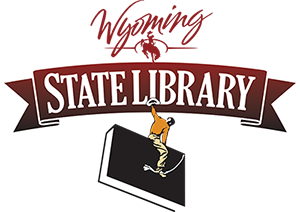
Historic ad for Cascarets from the Wyoming Newspapers Collection
Today, when you go to the store to buy aspirin you know you are getting what is advertised. Modern over-the-counter cures have labels listing their ingredients. Even if you can’t figure out what’s in the medicine, the government makes sure it’s safe and works well.
Before the 1930s, there weren’t laws like the Federal Drug, Food, and Cosmetics (FDC) Act to check if medicine was safe. Instead, a person could bottle up anything and sell it. This led to the rise of what we now call “snake oil salesmen.” While some cures contained actual medicinal ingredients, they were often ineffective. Ingredients ranged from colored water to cures containing opiates or laxatives.
These cures were often called patent medicines by their sellers. Even though they were called “patent medicines,” a lot of them didn’t actually get a government patent or approval as real medicine. Instead, the name comes from the English term “letters of patent,” which were like today’s trademarks.
One hallmark of patent medicine is the ludicrous claim of “curing everything that ails you.” For example, Cascarets Candy Cathartic claimed to cure everything. The asserted list of curable ailments included constipation, sunstroke, heartburn, colds, bad breath, appendicitis, ulcers, eczema, and headaches. The main ingredient of Cascarets main ingredient was Senna, a laxative that is still used to this day. The patent medicine could only cure the first of their long list of illnesses. Its effect on most illnesses varied from nothing to being dangerous. In the case of the above advertisement they claimed to cure sunstroke. Of course, adding a laxative to an already dehydrated person would be the last thing you want to do!
 Other patent medicines claimed to cure, but failed to include anything even close to medicinal. One example, Peruna, ostensibly offered a cure for catarrh. Catarrh was a medical term formerly used for what we now call a “stuffy nose.” Yet, as it is today, most people of the 1800s and early 1900s had no idea what “catarrh” meant. This allowed the salesmen to claim that it could cure essentially everything. Ads included testimonials, like the one to the left, to declare how the medicine could cure all ills. Despite its advertisement’s claims, Peruna was ineffective. The ingredients contained only water, 190-proof alcohol, coloring, and flavoring. With a recommended dose of three wine glasses, this cure was more likely to get you drunk than to heal you!
Other patent medicines claimed to cure, but failed to include anything even close to medicinal. One example, Peruna, ostensibly offered a cure for catarrh. Catarrh was a medical term formerly used for what we now call a “stuffy nose.” Yet, as it is today, most people of the 1800s and early 1900s had no idea what “catarrh” meant. This allowed the salesmen to claim that it could cure essentially everything. Ads included testimonials, like the one to the left, to declare how the medicine could cure all ills. Despite its advertisement’s claims, Peruna was ineffective. The ingredients contained only water, 190-proof alcohol, coloring, and flavoring. With a recommended dose of three wine glasses, this cure was more likely to get you drunk than to heal you!
To see more patent medicines, check out the advertisements in the Wyoming Newspaper Digital Collection. Additionally, many of the early trademarks for pharmaceuticals in the Wyoming Trademark Collection are for patent medicines.
